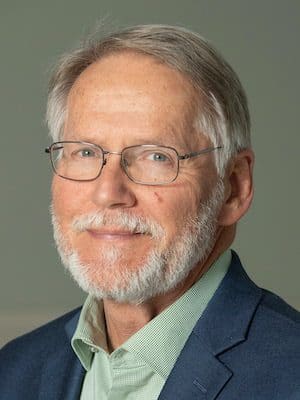A highlight of digging with the Jezreel Expedition is the opportunity to spend some time living on a kibbutz. The first kibbutzim (the plural form) were formed in the early 1900s as part of the Zionist movement encouraging Jews to move into Palestine, and the movement continued to grow through the establishment of the modern State of Israel.
Although not all kibbutzim are alike, most were founded as farming collectives on a socialist model. Today, some kibbutzim still function as collectives, in which kibbutz members (known as kibbutzniks) either work on the kibbutz or turn over outside income to the collective. In return, they receive the use of a modest house, a monthly stipend for expenses, and lifetime health care. Housing is based partly on seniority, but mostly on family need: the surest way to get a bigger house is to have more children.
A majority of kibbutzim have switched to a more capitalist model, in which members keep most if not all of their outside income and pay fees toward the benefits they receive from the kibbutz. Likewise, few kibbutzim rely entirely on farming as a primary source of income any more: many have switched to various forms of industry. For example, tour groups I bring to Israel typically lodge at Nof Ginosar on the northwest shore of the Sea of Galilee, and Ramat Rachel, between Jerusalem and Bethlehem. Both are kibbutzim who earn income from operating hotel operations in which most of the workers are Israeli Arabs from nearby villages.
Participants in the Jezreel Expedition are privileged to stay at Kibbutz Yizre’el (the Hebrew spelling of Jezreel), which was established in 1948 by young soldiers who had fought in what Israelis call the War of Independence, waged against a coalition of Arab states. An Arab village atop the upper tel of the ancient site was destroyed in the war and its residents relocated. The new kibbutz was established on an adjoining hill rather than the archaeological site.
Like most kibbutzim, Kibbutz Yizre’el started as a farming community, and it still has large farming operations, including groves of olive and almond trees, and truck crops such as onions, corn, and grains. The kibbutz is noted for its large dairy operation, where a herd of healthy Holstein cows is milked three times every day, with much higher than average production. Yogurt is made on site. Many of the farm workers are not from the kibbutz, but from Thailand.
Kibbutz Yizre’el still holds mainly to the collective economic model, according to Paul Zelis, who works closely with Expedition participants.
It struggled financially for most of its existence, eking out modest profits from the farming operations. Its financial situation became much more secure in recent years, after it established a very profitable company called Maytronics, which makes robotic underwater swimming pool cleaners and other pool equipment marketed in 30 countries. The kibbutz recently voted to sell a small percentage of stock in the company to outside investors, earning a cash bonus for each member family.
Many of the kibbutz’s 500 plus residents are elderly, getting around in a variety of three- or four-wheeled electric vehicles. Some have caregivers (often from the Philippines), who are paid by the kibbutz.
Many younger people move away from the kibbutz when they grow up, so leaders actively recruit both them and other younger people with children to live as kibbutzniks, and the number of children scampering through the manicured pathways suggests success.
Kibbutz Yizre’el was a pioneer with regard to raising children: in 1969, it became one of the first kibbutzim to abandon the traditional model of having all children live together in communal houses, allowing them to live at home with their parents.
The kibbutz has a central dining hall where all residents can eat: some come for every meal, while others come with plastic containers and scoop up food to eat at home. The kibbutz is not considered a religious community, but keeps various traditions: every Friday all members are invited to a Shabbat dinner in the Dining Hall, preceded by a short program of prayers and music. A woman lights Shabbat candles, and someone sings the traditional “L’cha Dodi” (“Come, My Beloved”), which welcomes the arrival of Shabbat (the Sabbath).
While it may come as a surprise to some, Kibbutz Yizre’el has been a major center for rugby in Israel, maintaining both 7-player and 15-player teams — though most of the players are not members of the kibbutz.
The kibbutz maintains a nice rugby field on the premises, and celebrates the teams with a large mural on the foundation of the dairy barn.
The kibbutz maintains a variety of apartments where guests and visiting family members can stay, and these are graciously made available for members of the Jezreel Expedition, which digs for four weeks each summer. We are allowed to eat in the dining hall, use the swimming pool, and rest in air-conditioned rooms that are not fancy, but fully adequate.
 If we want to wash clothes, we do it by hand in the tub or the sink. They dry quickly on outdoor racks: we learned not to leave them out overnight when an automatic sprinkler system left our laundry wetter the next morning than it had been when we hung it out.
If we want to wash clothes, we do it by hand in the tub or the sink. They dry quickly on outdoor racks: we learned not to leave them out overnight when an automatic sprinkler system left our laundry wetter the next morning than it had been when we hung it out.
The kibbutz also has a small store where dig participants can shop — but it doesn’t deal in cash. Participants must set up an account by depositing 100 or more shekels, and then shop by charging against that.
We are grateful to the members of Kibbutz Yizre’el for their kind hospitality. I, for one, am looking forward to another visit next year. If you’re interested in joining me, let me know ([email protected]). I’m hoping we can plan a joint Campbell University/Nurturing Faith Dig Experience: if it works out, we’ll be posting details on both websites and in the Nurturing Faith Journal. Think about it!









